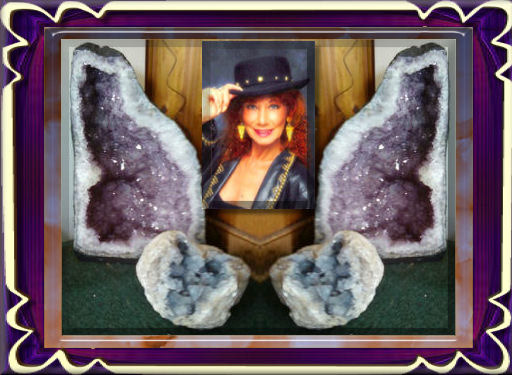Ammolite is the mineralized remains of an ammonite. Ammonites were cephalopods (predatory marine mollusks), similar to the modern-day squid or chambered Nautilus. They built a chambered shell, and lived in the last chamber. Inner chambers were filled with gas or fluid which was used to control buoyancy and movement, to float at different levels of the ocean in search of food. This unique ability to float at different depths of the ocean is what inspired Jules Vern (the famous science fiction writer) to call the first submarine the Nautilus. Like modern cephalopods, they probably moved through the water using jet propulsion. Ammonites lived from the Paleozoic era to the end of the Cretaceous era, 415 - 65 millions years ago. They were abundant in all of the oceans until they suddenly became extinct, around the same time as the demise of the dinosaurs.
Mined in Alberta, Canada, ammolite was recognized by the International Colored Gemstone Commission (ICGC) in 1981 as a new organic gemstone and is considered the rarest gemstone in the world. Although fossilized ammonites are found all over the world, supplies of the colorful iridescent gem quality ammolite are found only in southern Alberta, Canada, and only about 5% of this material actually yields gemstone material.
Ammolite forms from the mineralized remains of the ammonite shell which was exposed to tectonic pressure, mineralization, and intense heat. It is composed of 97% aragonite, 1% iron, 1% silica, and 1% trace minerals such as titanium, copper, chromium, magnesium, manganese, aluminum, barium, silicon, strontium, and vanadium. Aragonite crystals form thin scales and / or layers of various thickness and as light hits these layers it is diffracted and exhibits the intense reds, yellows, greens, blues and other colors of the rainbow seen in gem quality Ammolite. It is sold in four grades according to its color and brilliance:
Standard - exhibits one or more distinct colors.
A - exhibits two or more play of colors.
A+ - a stone that displays two or three bright colors.
AA - exhibits three or more brilliant sharp colors.
Standard - exhibits one or more distinct colors.
A - exhibits two or more play of colors.
A+ - a stone that displays two or three bright colors.
AA - exhibits three or more brilliant sharp colors.
Ammolite is sold in its natural form, as a doublet or more commonly as a triplet. A triplet is made of a dark gray layer of shale on the bottom and a cap of clear optical quartz or synthetic spinel on top. Ammonite is extremely fragile. The top layer protects the stone and helps to show off the brilliant color flash, while the bottom layer adds thickness and additional protection. Natural ammolite is a 3.5 - 4 on the Mohs scale and is extremely delicate and brittle but triplets with protective clear quartz or spinel caps increase the hardness to 7 to 8.5, making the stone more durable for jewelry.
Metaphysical:
The name "ammonite" is derived from the ancient Egyptian god named Ammon who believed these creatures were divine. Ammon is represented in ancient literature by the head of a ram with twisted spiral horns that are reminiscent of an ammonites spiraled shells. Pliny the Elder, the Roman historian, considered ammonite to be the holiest of stones because he believed it would summon dreams of prophesy.
The name "ammonite" is derived from the ancient Egyptian god named Ammon who believed these creatures were divine. Ammon is represented in ancient literature by the head of a ram with twisted spiral horns that are reminiscent of an ammonites spiraled shells. Pliny the Elder, the Roman historian, considered ammonite to be the holiest of stones because he believed it would summon dreams of prophesy.
